A leading tea trading house was looking for a classifying sieve machine that not only enables coarse and fine grain sieving for different tea varieties. The separation of different tea leaf sizes and the sorting out of foreign bodies must also be done.
However, not every sieving method is suitable for the delicate tea leaves. Excessive sieving movements lead to the breakage of the fine tea leaves. The proportion of fines in the sieved material and thus the production waste is increased.
So how do you avoid additional breakage and reliably separate the finest dust and coarse particles in a single operation? And with a target throughput of 2,000 kg per hour?
The first answers are provided by tests in the Engelsmann technical centre, together with the customer. It quickly becomes clear that the JEL Freischwinger screen is the best choice for this application because of its particularly gentle screening action. In linear stroke screening machines, the sieve trough is set into a uniform, horizontal movement. This type of sieve agitation causes the tea leaves to move flatly over the sieve mesh and not break in the process.
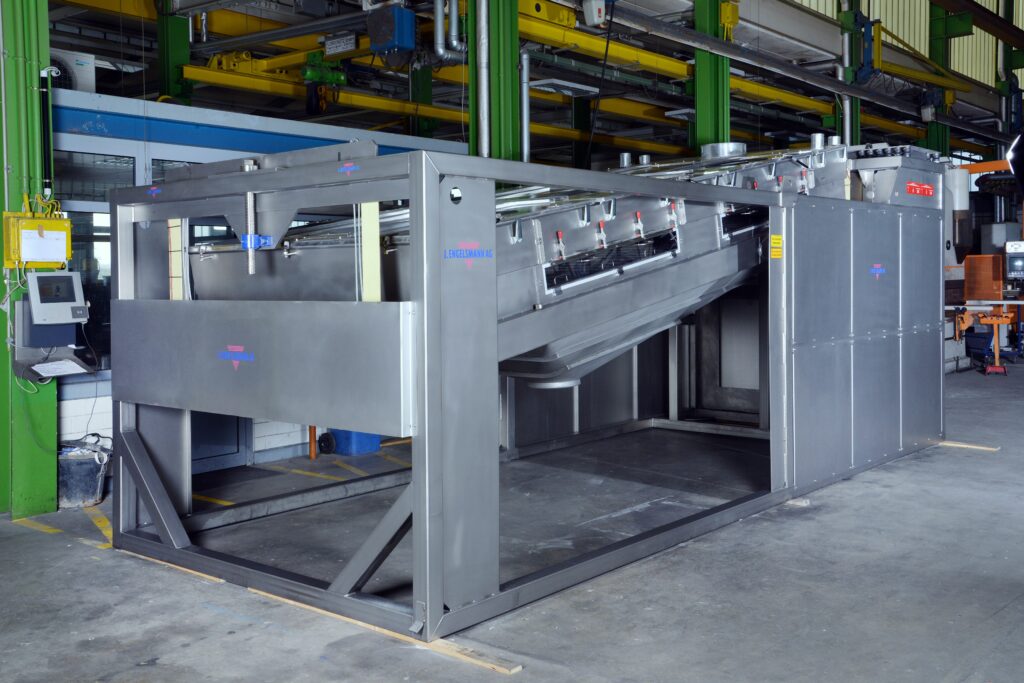
For operators looking for a gentle screening process for sensitive products, the JEL Freischwinger offers many advantages. It covers a wide particle size range (40 µm to 20 mm) and can be equipped with screening surfaces of different sizes (0.24 m² to 24 m²). Suitable for small and large screening tasks.
Linear stroke screening machines are rarely suitable for products that are sensitive to breakage: With these machines, the sieve tray is set into high-frequency horizontal and vertical vibration with the help of an unbalanced motor, i.e. the product begins to bounce up and down on the sieve mesh. For this reason, vibrating sieves are not suitable for sieving tea: the fine tea leaves are moved too much and break.
With linear stroke screening machines such as the JEL Freischwinger, the intensity of the vibrating movement can be controlled via the stroke length and perfectly adapted to the respective type of tea to be screened. Another important advantage of vibrating screen machines is certainly the energy efficiency of their swing drive.
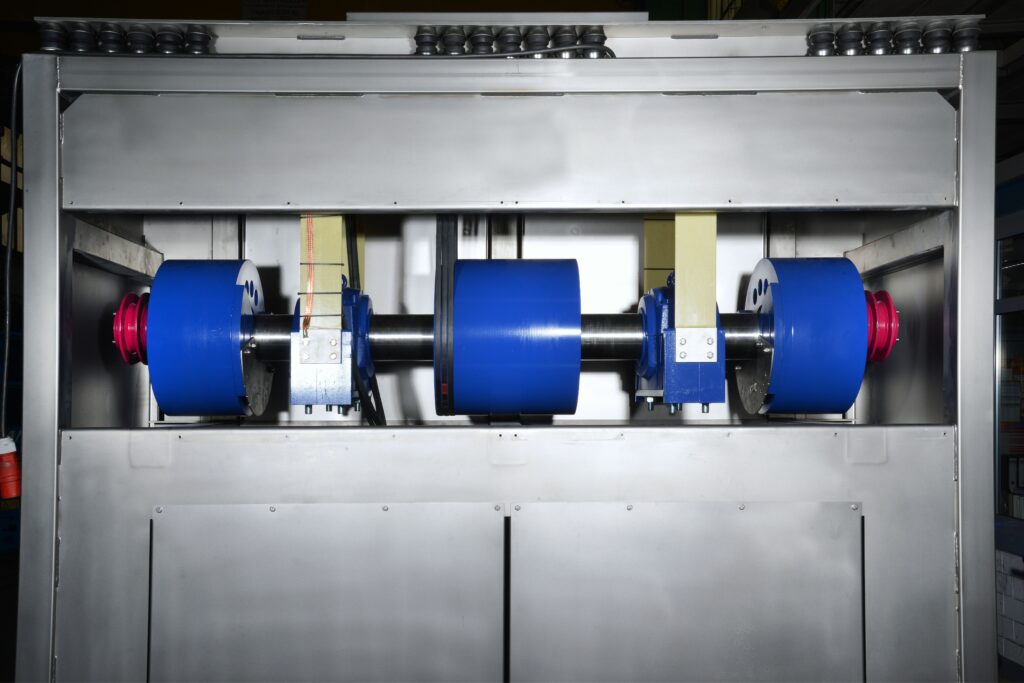
Energy-efficient flywheel drive – especially important for heavyweights such as this JEL Freischwinger in special design with a length of approx. 7 m. In operation, it works with only 10-20 % of the rated current.
The electric motor used transmits the power to flywheels by means of V-belts. These are precisely matched to the mass of the screening trough. The push rods attached to the flywheels bring the sieve trough into its horizontal oscillating motion. Sufficient thrust is achieved after 15 seconds with full nominal current. 10-20% of the nominal current is then sufficient to keep the screening trough moving. A real cost saving – especially with large screening machines like this JEL Freischwinger.
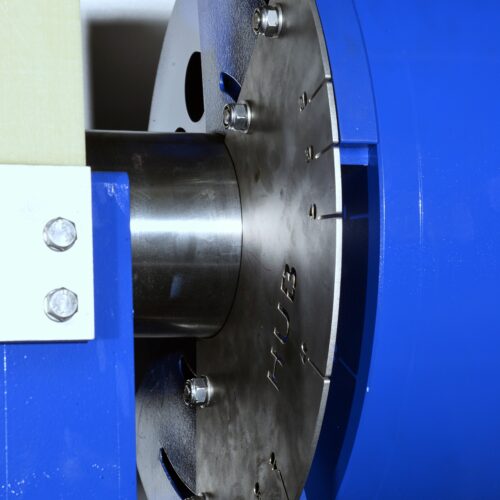
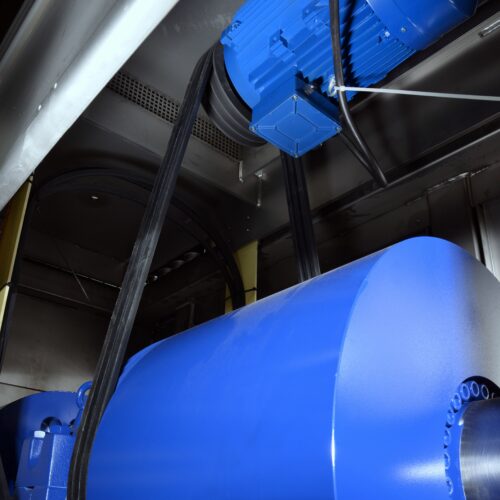
1a quality in the tea bag: Individual setting parameters and an energy-efficient flywheel drive enable a productive, economical sieving process.
First get rid of the coarse, then the fine
What remains is perfectly strained tea, which is discharged and transported to the next process step: portioning and packaging for the end consumer.
A part of the process that requires highest attention and accuracy.
To achieve the desired throughput rate when screening the tea, the JEL Freischwinger is equipped with a screening area of 16 m². It is designed as a double deck with two screening levels: an upper deck for coarse screening and the lower deck for fine screening.
In the first step, the tea leaves are fed from a distribution plate mounted across the sieve surface onto the upper sieve deck and distributed evenly over the sieve fabric. In this way, the entire sieve surface is optimally utilised and the tea does not form a “carpet” on the sieve fabric.
The upper sieve insert is covered with relatively large mesh sizes between 4 mm and 12 mm. The tea in the fraction suitable for sale falls through this insert. The same applies to the fines, such as dust or too small fragments of tea leaves. All quality-reducing, coarse foreign bodies remain on the upper sieve fabric. They are discharged from the sieve machine via the coarse material outlet and disposed of.
The tea ready for sale is collected by the sieve mesh of the lower sieve inserter. The tea leaves can now be discharged as good goods via an outlet in the appropriate grain size range. They are then conveyed directly to the filling station and filled into sales containers for the end consumer.
All too fine fractions fall through the meshes of the second screen deck. They are caught below the sieve tray, channeled out of the sieve machine and then disposed of. These excessively fine particles later lead to an undesired clouding of the tea in the tea cup due to suspended particles and must therefore also be removed.
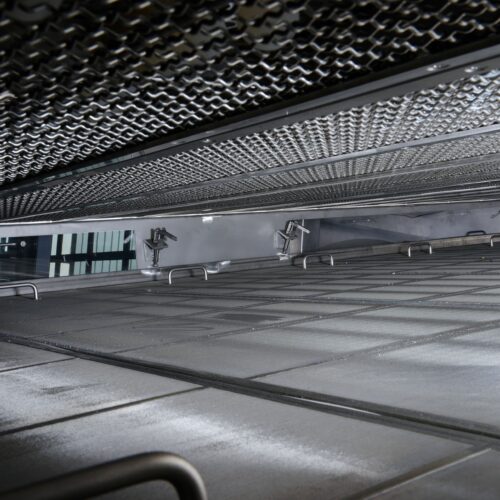
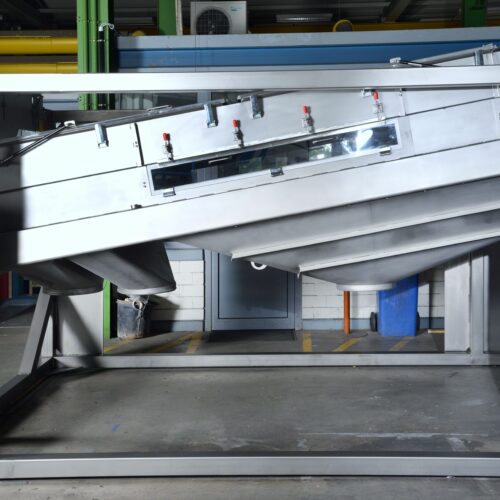
With mesh sizes of 0.2 mm-1.4 mm, this stage screens out everything – down to dust particles – that must not end up in the end consumer’s tea bag.
Full power thanks to cleaning system
This reliably avoids plugged grain when screening tea
Pieces of leaf that correspond in size to the mesh size of the sieve can get stuck in the mesh as so-called plug-in grain. The screen mesh gradually becomes clogged. If it loses its permeability, this has a negative effect on throughput.
The JEL Freischwinger is equipped with a cleaning system that solves the plug-in grain problem in a simple way: Wave grids with cleaning balls are located underneath the screen feeders. The horizontal oscillating movement of the sieve trough sets them in motion. They continuously rub against the underside of the screen mesh, loosening stuck particles from the mesh openings.
At the customer’s request, Makrolon windows were integrated into the sides of the screening trough. These can be opened using a quick-release system. Dust and other fine particles that have collected in the lower deck can be extracted – without dismantling the screen layers above.
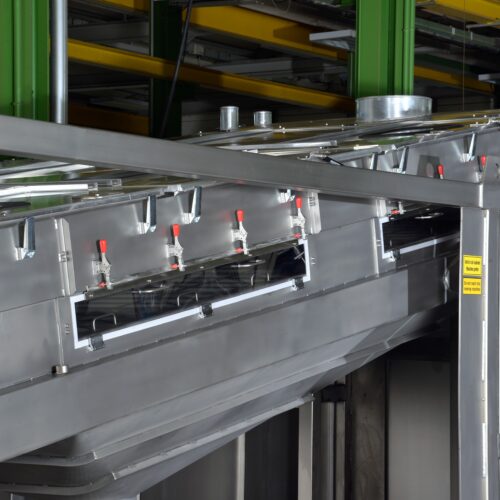
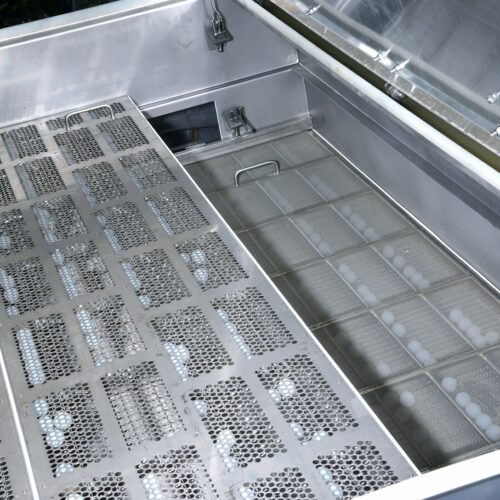
Thanks to generous viewing windows, the areas inside the sieve trough can also be seen from the side. Conveniently positioned at eye level, the operator can thus monitor the screening process.
Reduce downtimes, increase machine availability
Even large screening machines are easy to handle
In particular, it must be possible to change the sieve inserts quickly and easily.
Minimising downtimes and ensuring high machine availability are essential for economic production. The machine technology used must be easy to handle and requires few operators. This also applies to the JEL Freischwinger screening machine for tea.
The lid of the screening machine, which is equipped with viewing windows, is made of lightweight aluminium. It is divided into several parts and can be opened in individual segments. This eliminates the need for lifting tools. This facilitates the change of the sieve inserts – and also cleaning or maintenance work.
After folding up, the lid segments are held securely in place by gas springs. To remove the sieve inserts, the quick-release clamps are loosened and the sieve insert can be replaced in a few easy steps. Everything is dust-tight in accordance with UVV.
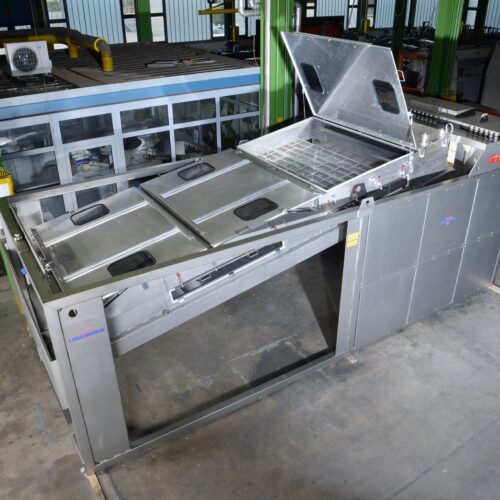
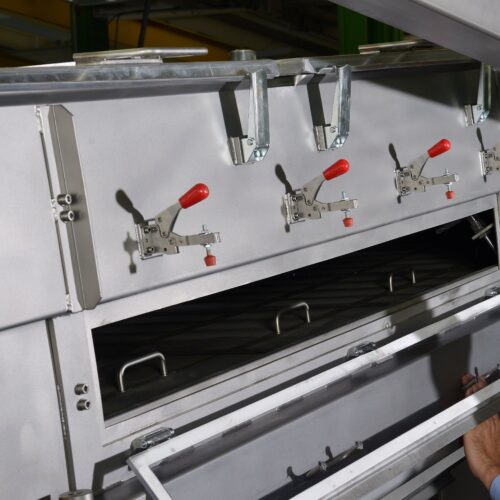
Easy handling included: sieve inserts can be easily replaced by means of a quick-clamping system. Time-consuming disassembly work is now a thing of the past with the JEL Freischwinger.

